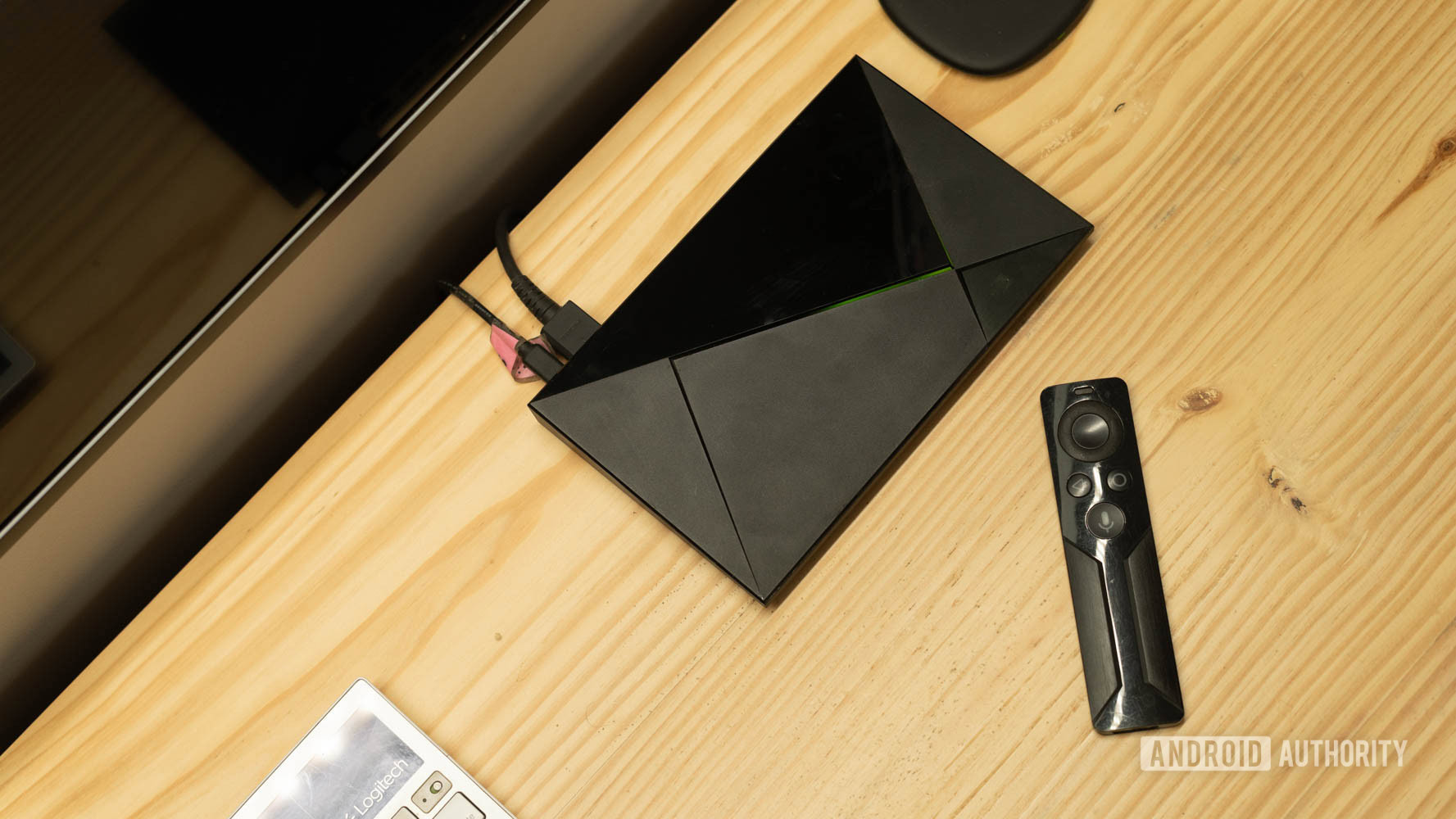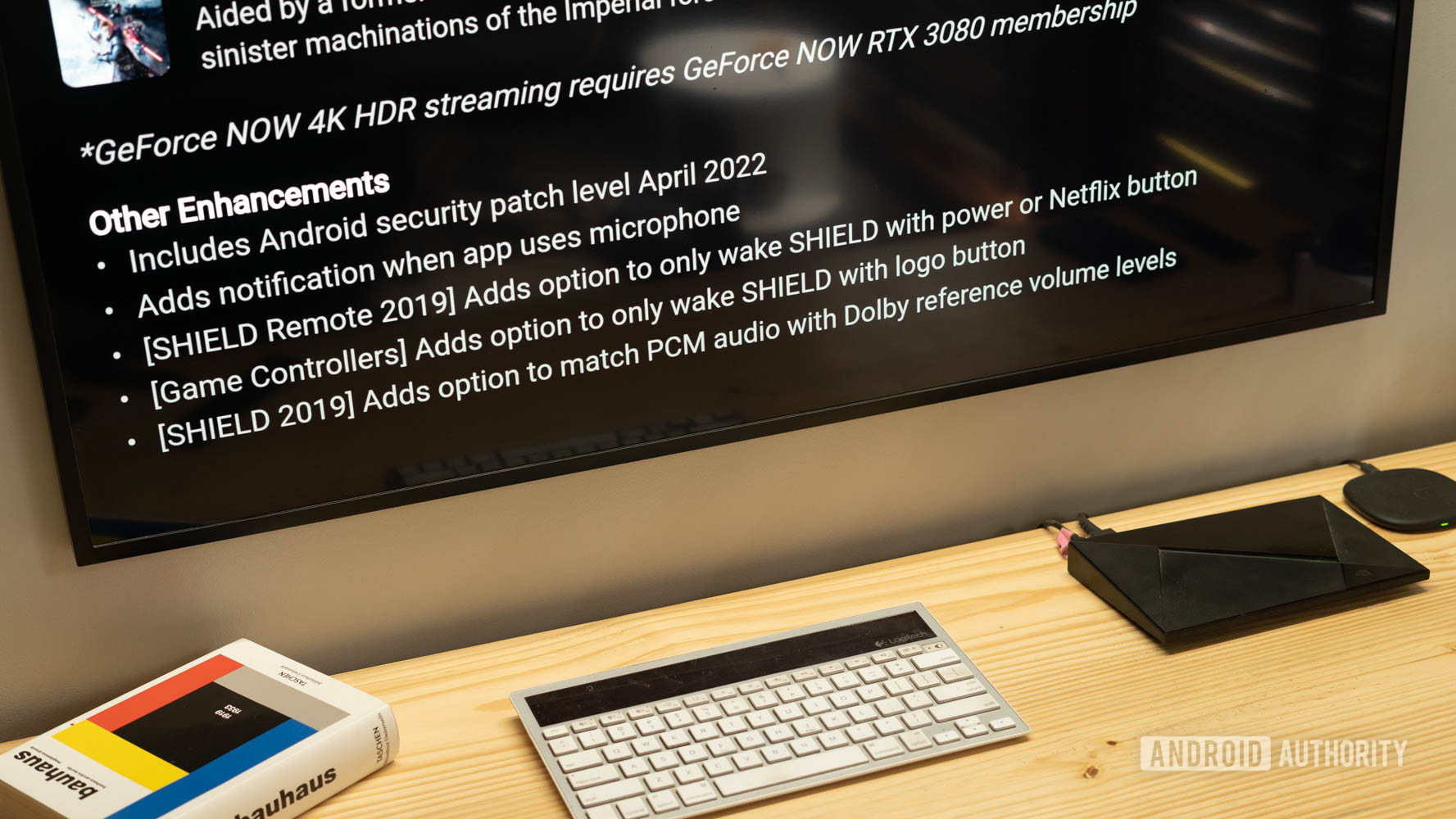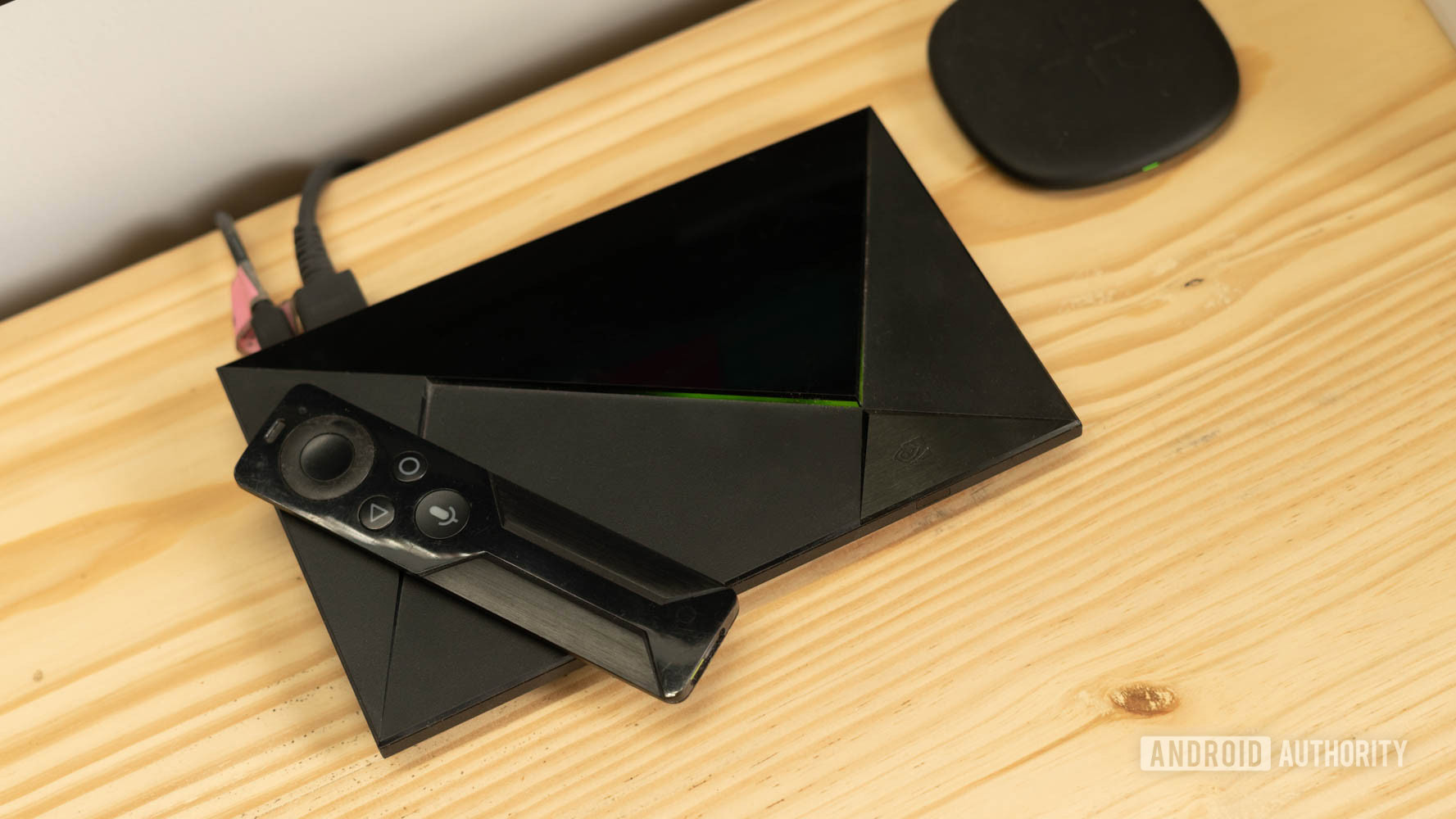Affiliate links on Android Authority may earn us a commission. Learn more.
The NVIDIA Shield TV is the exception to the disposable technology rule

Technology release cycles have never been shorter. Incredible exchange bonuses and affordable contracts tempt us to be on the bleeding edge of smartphone technology. Amazon refreshes its TV dongles every other year with minor performance enhancements. Television brands urge users to upgrade to ever higher resolutions without content to back it up. But it doesn’t always have to be the case. Seven years ago, I purchased a purpose-built device that was both ridiculously overpowered for the task at hand and incredibly well-tuned to do one thing. And that device is still rocking right now. Yes, I’m talking about the NVIDIA Shield TV streamer.
Related: What’s the best media streaming device? Here are our top picks
On a cold New York morning back in 2015, I picked up the original NVIDIA Shield TV as a replacement for my Chromecast. And for five years, it served as the central piece of my media-watching experience. I’ve used it to stream Netflix, run some of the best emulators for retro gaming, and even as a Plex server. The futuristic-looking device ran fast, quiet, and kept pace with whatever I threw at it.
By building a future-proofed and admittedly overpowered product, NVIDIA could circumvent issues like hardware obsolescence.
The Shield TV is part of a rare breed of tech products that have reinforced my long-held belief that sometimes it makes sense to aim high and splurge on a premium product. Priced at $200, it was and continues to be dramatically more expensive than the average TV dongle. However, in return, you get a product that continues to be supported over seven years down the road. That is unprecedented for anything running Android. By building a future-proofed and admittedly overpowered product, NVIDIA could circumvent issues like hardware obsolescence while leveraging economies of scale over the years. That’s an incredibly smart move that we don’t see enough of.
Upgrades shouldn’t mean leaving behind existing customers

It’s not as if NVIDIA hasn’t improved its hardware over the years. An update in 2017 brought along a smaller form factor, while the 2019 refresh gave the product a minor performance upgrade with AI-based upscaling. But upgraded performance doesn’t mean that the original got left behind. By building on top of an excellent base, NVIDIA has continued updating even the original model without delays.
Seven years on, the original NVIDIA Shield is still a capable performer getting the latest software updates.
A few years ago, I switched over to a Fire Stick 4K since my original Shield TV didn’t support Dolby Vision content, and the Shield isn’t sold in India. However, that stick is already starting to feel sluggish and slow. Meanwhile, the Shield TV continues to be ripping fast with all the latest updates. And that’s not just security patches. The 2015 NVIDIA Shield is powered by the Android 11-based TV OS, while Google’s own Chromecast with Google TV runs Android 10 under the hood. For perspective, my NVIDIA Shield TV launched with Android 5.1.
See more: How is the seven-year-old NVIDIA Shield kept up to date?
It’s a testament to NVIDIA’s support cycle for the product that the Shield’s customer base is not only loyal but extremely vocal. And for a good reason too. I, too, would happily pay a premium for a product that treats the customer right and adds value instead of shortchanging them for software upgrades.
The Shield's customer base is not only loyal but extremely vocal. That's a testament to NVIDIA's committed support strategy.
It is also in stark contrast to the smartphone industry, which is still coming to terms with the idea of long-term software support. Sure, the situation is significantly better with more brands offering up to three years of software updates, but even that isn’t enough in a world of supercharged smartphones. A modern-day mid-ranger can run circles around the original NVIDIA Shield, and yet expecting seven years of support remains a pipe dream.
Would you pay a premium for a device with lengthier support?
Long-term support will be key as technology fatigue sets in

We are reaching a point of technology fatigue, especially in the smartphone space. Truly innovative features are few and far between, and improvements tend to be incremental at best. Where smartphone brands opt to stay in the limelight through a constant barrage of hardware releases, NVIDIA has achieved much of the same fandom and loyalty through a relentless focus on customer delight. There’s a lot to be learned from it.
I would happily pay a premium for a product with long-term support, and so would many others.
Perhaps it is time that more brands took a page out of NVIDIA’s playbook and slowed down the iterative updates. I’m confident that more than a few users would happily put down an extra hundred dollars towards a piece of technology that promises to stay updated and relevant years down the road. I know I would.

